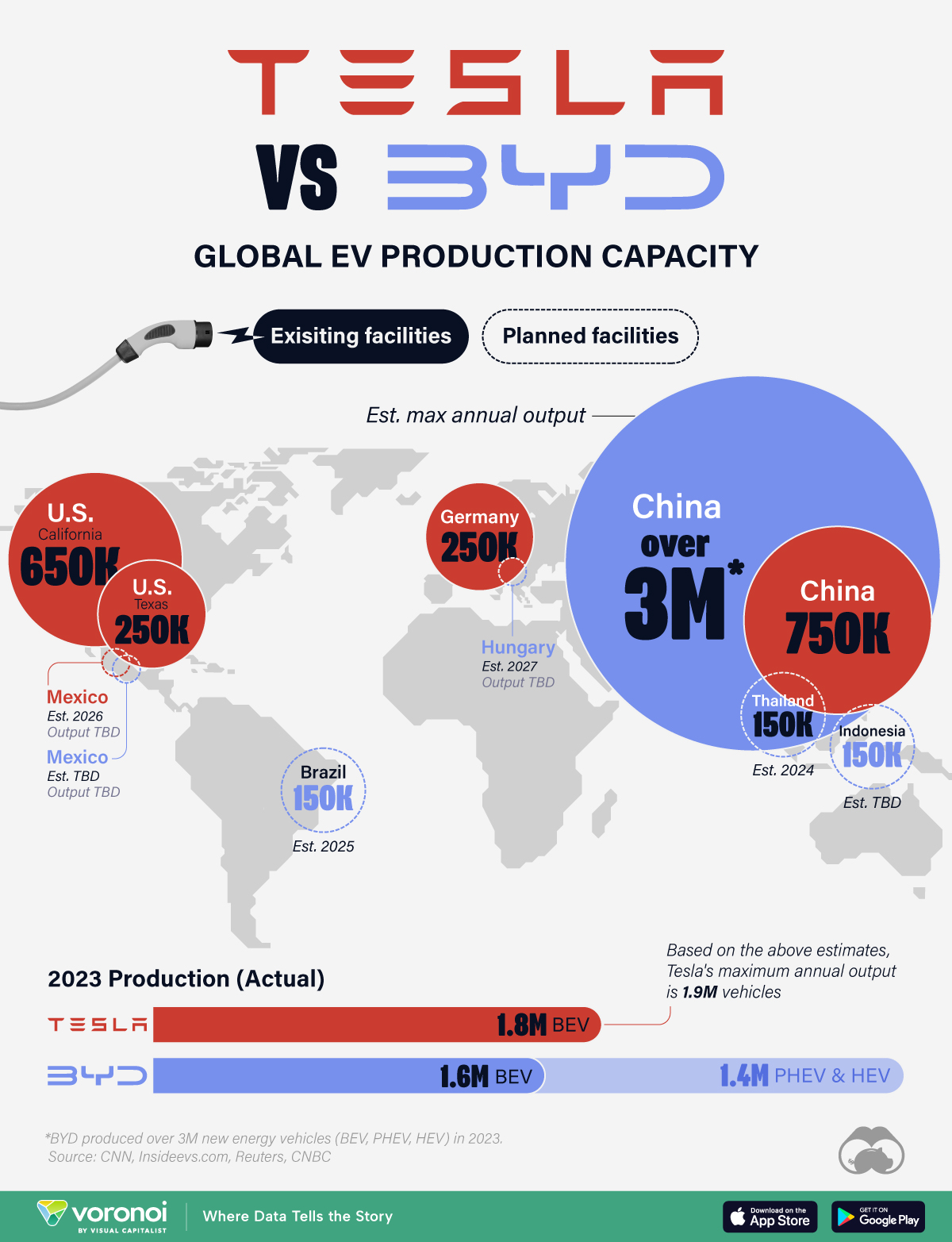Mapped: Where Tesla And BYD Make Their Cars
(Click on image to enlarge)

In 2023, Tesla and BYD were the world’s two largest electric vehicle (EV) companies by a large margin, holding 19.9% and 17.1% market shares respectively.
With no other company able to match their scale, these two automakers have found themselves locked in a competition for the global EV crown. In Q4 2023, BYD outsold Tesla for the first time ever by 41,000 vehicles (526,000 vs 485,000). In Q1 2024, however, their positions were switched after Tesla outsold BYD by 87,000 vehicles (387,000 vs 300,000).
To gain insight into this rivalry, we’ve visualized the locations of both companies’ present and future EV factories, along with their estimated maximum annual output. Figures come from a variety of sources, and represent the latest information pertaining to planned production facilities (as of April 2024).
Tesla’s EV Factories
Starting with Tesla, this graphic highlights the locations of their four operational factories. Gigafactory Shanghai is the largest in terms of production output, at 750,000 vehicles per year.
Note that Gigafactory Nevada is not on this list because it produces battery cells, rather than finished vehicles.

Tesla’s China factory is unique in that it’s fully owned by Tesla itself, rather than a joint venture with a local company.
Looking to the future, Tesla’s next factory will be Gigafactory Mexico, which was announced (with few details) in March 2023. According to reporting by Electrek, the Mexican government is eager for the factory to begin construction, despite CEO Elon Musk voicing concerns about today’s high-interest rate environment.
BYD’s EV Factories
Although EV demand is not growing as quickly as it was in previous years, BYD is putting the pedal to the floor when it comes to global expansion. The company has announced factories in various regions including Europe, Southeast Asia, and Latin America, all to be completed within this decade.

BYD produced over 3 million electric vehicles in 2023 (BEV, PHEV, and HEV). Given that it had no international factories running during that year, we assume that BYD has the capacity to produce at least 3 million vehicles in China.
Government Subsidies Help Fuel Expansion
If you’re wondering how BYD is funding these ambitious plans, consider this: a recent study by Germany’s Kiel Institute determined that BYD has received over $3.7 billion in subsidies from the Chinese government.
For perspective, this online subsidy tracker reports that Tesla has received $2.8 billion in government subsidies. A large share of this amount ($1.6 billion) was awarded by the state of Nevada, which is where Tesla’s first gigafactory is located.
More By This Author:
A Breakdown Of India’s Overseas Trade In 2023
Mapped: Unauthorized Immigrants By State
Mapped: The Real GDP Growth Of U.S. Regions In 2023
Disclosure: None



